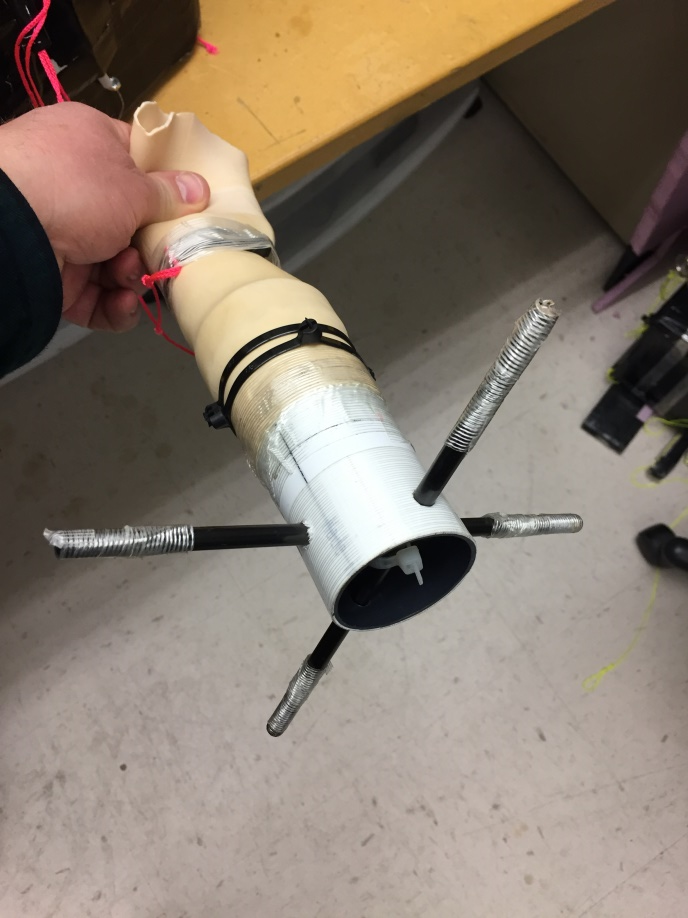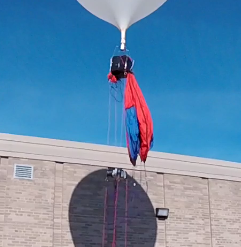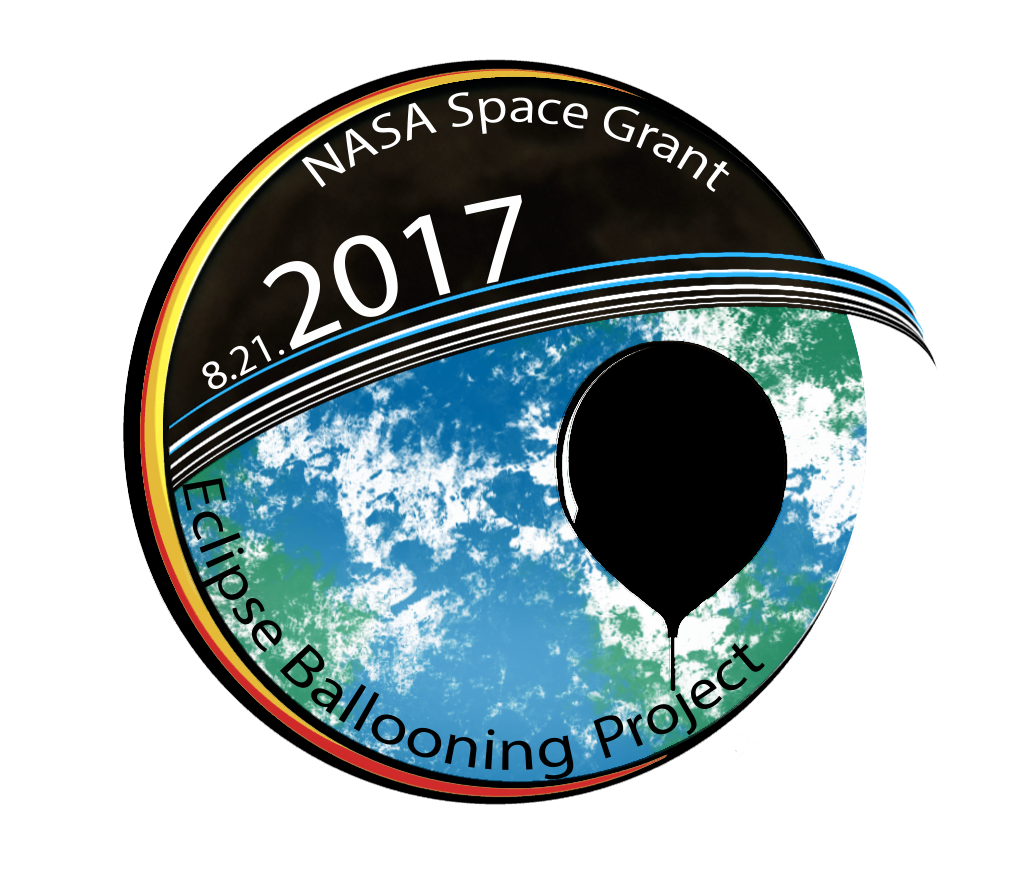Passive Anti-Rotation


Two views of the "neck insert" part of the "passive anti-rotation" apparatus.
What Is It and How Does It Work?
The passive anti-rotation device helps mitigate rotation of
balloon payloads in the stratosphere by expanding the
tie-point to the balloon neck horizontally, providing
restoring torque when the payload stack attempts to rotate
with respect to the balloon. Balloons often stop rotating once
they reach the stratosphere – this device couples the payloads
to the balloon so the payloads stop rotating too.
The key to the passive anti-rotation device is the “neck
insert” shown above. It consists of a section of thin-wall
2-inch diameter PVC pipe (available at vacuum cleaner stores,
rather than at hardware stores). A cap is glued on to the top
of the pipe to seal the tube and also to give the balloon a
ridge over which to stretch. The balloon is secured by zip
ties (below the ridge) and also taped to the pipe below (at
the balloon neck opening).
The standard “hard tie point” we put inside the neck of the
balloon remains in place – see zip ties and “main line” (pink
string) connection located above the passive anti-rotation
neck insert. The main line runs centrally (i.e. directly below
the neck) to the payload below. Close to the bottom of the
open PVC tube (which is reinforced with strapping tape running
in two directions) are two 8 inch long carbon fiber tubes
through which “side lines” (not in place in these photos) also
run to the corners of the payload below. We recommend setting
up the rigging so the weight of the payload stack is held
almost exclusively by the main line and that the side lines
are nearly loose and serve just to prevent rotation, not to
hold up the payload weight. That said, the side lines don’t
have to be particularly strong (but do need to be protected
from abrasion by the ends of the carbon fiber tubes – we use
more strapping tape for that). Hanging a lot of weight on the
carbon fiber tubes might snap them.
For best effect, place the first payload quite close to the
neck of the balloon. The whole point is to avoid any place in
the stack, right up to the balloon, to be a single line which
cannot provide much anti-rotation torque. However if the stack
does manage to spin with respect to the balloon then the main
line and the side lines will cross, making this device to
spread out the lines ineffective. Hence keep the connection
lines between payloads as short as is practical.
In the case of video-telemetry eclipse balloons, the first
payload down from the neck of the balloon is likely to be the
OCCAMS razor cutter. That needs to be mounted so that the
razor cutter can sever connections to the main line and all
the side lines simultaneously. One way to accomplish this (not
shown in photos here) is to put a “belt” around the OCCAMS box
and have all the lines from above attach to that belt so that
when the belt is cut, all the lines are released.
To preserve the anti-rotation effectiveness, the entire
payload stack should be connected below the first payload box
with multiple, parallel, rigging lines, as widely separated as
practical. We use four lines and run them down the corners of
the boxes (if they are rectangular in profile when viewed from
above).
This passive anti-rotation device does complicate the
placement of the parachute, which typically would be attached
to the balloon neck by a single main line – and we are
avoiding ever having any single main line anywhere in the
stack. Our recommendation is to attach the parachute top to an
open-top hook of wire (no barbs!) on the side of the first
payload box and attach the parachute shroud lines to the
second payload box. Thus the parachute will hang down as
normal during the ascent but when the balloon bursts, or is
cut away, the parachute will inflate and slip upwards off the
hook. Then the OCCAMS box will dangle below the parachute for
the descent, beside the rest of the payload stack.

Two passive anti-rotation neck insert closely attached to a (rather large) OCCAMS payload box. The parachute is hooked to the side of that first box, with shroud lines attached to the next box down. The parachute came free from the hook a few seconds after burst.
Relevance to Our Eclipse Goals
Payloads often rotate throughout balloon flights (see first video below), making footage hard to watch. Mitigating rotation using this device (see second video below, taken from another balloon but flown at the same time), will improve video quality and help any pointing mechanism used on eclipse flights to not have to work nearly so hard to keep the shadow (or the sun) in view.
Demonstration
Watch the videos below!
